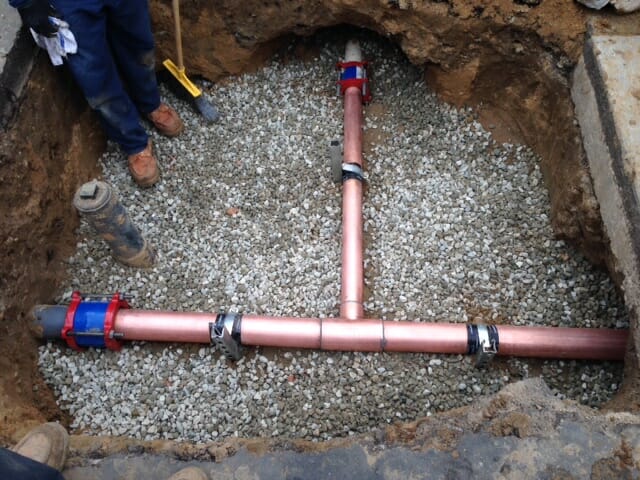If you have an older home, you are likely to be aware that
fixing it up can be rewarding, but there is always a concern about the age of its infrastructure. This can be a particular concern when assessing the plumbing system, as you may not know how old the water lines are. While water lines are sturdy, they are not immune to the effects of aging, and if your home was built in the 1950s, you might need to think about replacement.
The Average Lifespans of Water Lines:
According to the
U.S Dept of Housing and Urban Development, the key factor in determining how long your water line should last is the material used to produce the line. The materials used have varied throughout recent history, as older materials were replaced with newer products. Unfortunately, some of these “new” materials may have been short lived, as it was discovered later that they might not stand the test of time. As a rough guide, here are the expected lifespans for water lines:
- Brass; Between 40 and 70 years
- Copper; Up to 50 years
- Galvanized Steel; Between 20 and 50 years
- Cast Iron; Between 70 and 100 years
- Lead; Up to 100 years
- Polyvinyl Chloride (PVC); Indefinite
So, in order to determine how long you can expect your water line to last, you will need to look at the age of your property and the material used to produce the line.
Warning Signs of a Blown Water Pipe:
Many of us have no idea what our water line is made from until a problem develops. Unfortunately, an aged water pipe can easily become damaged or blown, which can cause problems throughout your home. Fortunately, there are some warning signs that an issue has developed, and with some quick action, you could avoid serious problems and property damage. Some of the warning signs to look out for include:
- Puddles in Your Yard; While some standing water is to be expected after heavy rainfall, if you have puddles in your yard at other times, it can be a sign that there is an issue with your water line. Most water lines run under the property and through the yard to reach the main line. This means that if a leak develops or your water line has blown, you may notice excess water in your yard. The leak saturates the ground, allowing water to rise and create soggy areas.
- Excessive Water Bills; If you see a massive jump in your water bills without any obvious increase in water use, it is likely that you have a leak. A large increase may also be an indication of a water main leak. Any excessive water bills should be investigated, as you are not only wasting money, but wasting water.
- Significant Drop in Your Water Pressure; If you notice that your showerheads and faucets seem to have less pressure than they used to, it is an indication of a problem. When the issue is not localized to a particular bathroom, it could be a sign that you have a leak in your main water line.
- Discolored Water; Have you noticed that the water coming out of your faucets no longer looks crystal clear? Brown, discolored water or particles of dirt in the water is a sign that soil has entered your supply. This is a sign that there is a break somewhere in the line.
By Giovanni Longo President Flood Brothers Plumbing
Giovanni Longo is a 3rd generation master plumber who has been practicing his craft and trade in the greater Los Angeles area for well over a decade and a half. A plumbing and hydraulics-engineering innovator, Giovanni’s particular world-class expertise focuses on dealing with challenging sewer system designs as well as resolving complex commercial and residential draining issues. As a certified Flood Mitigation expert, he is also well versed in a wide variety of water damage and remediation solution.





